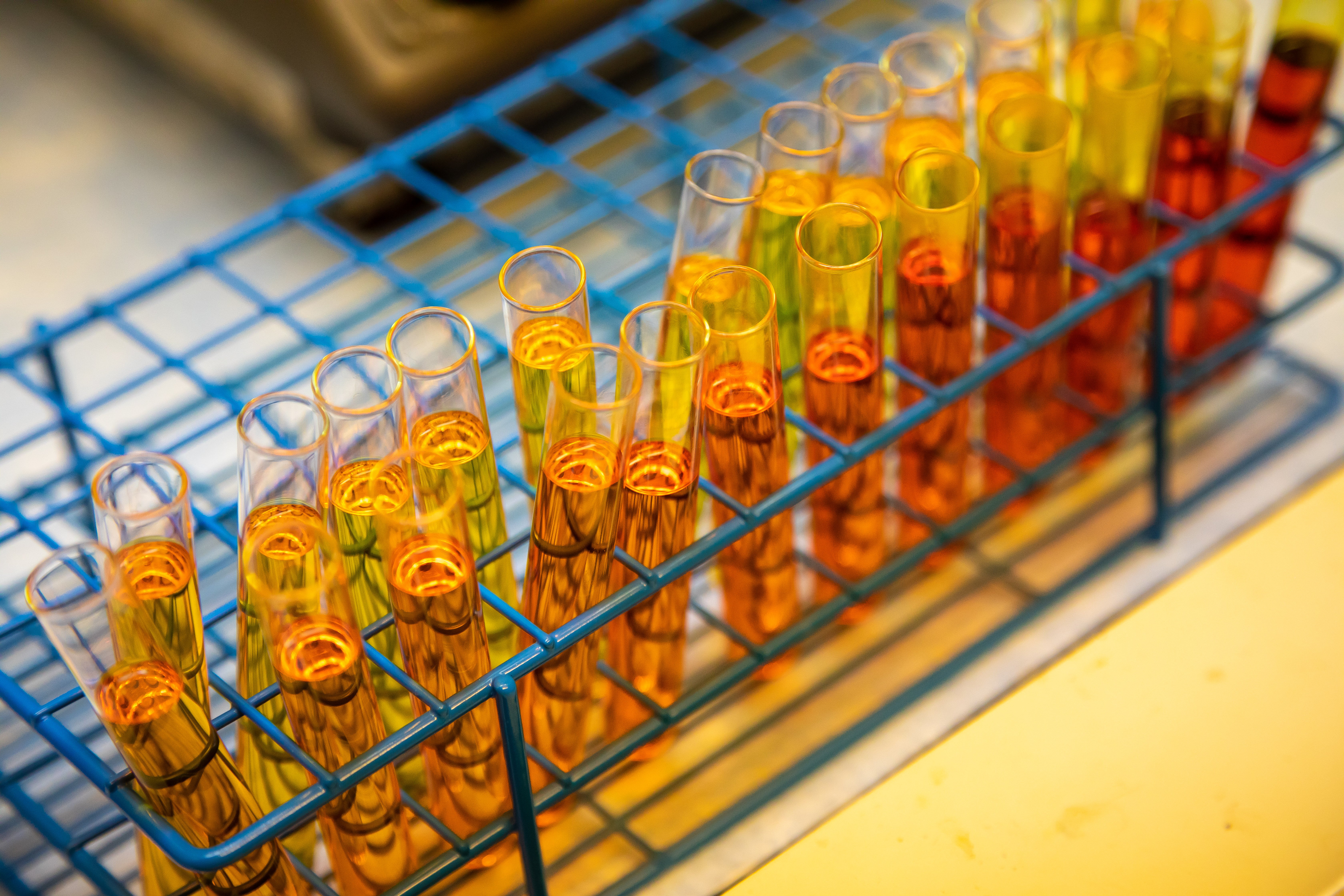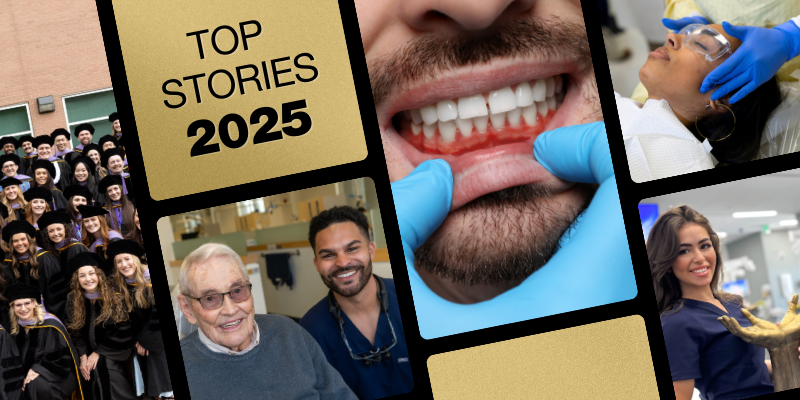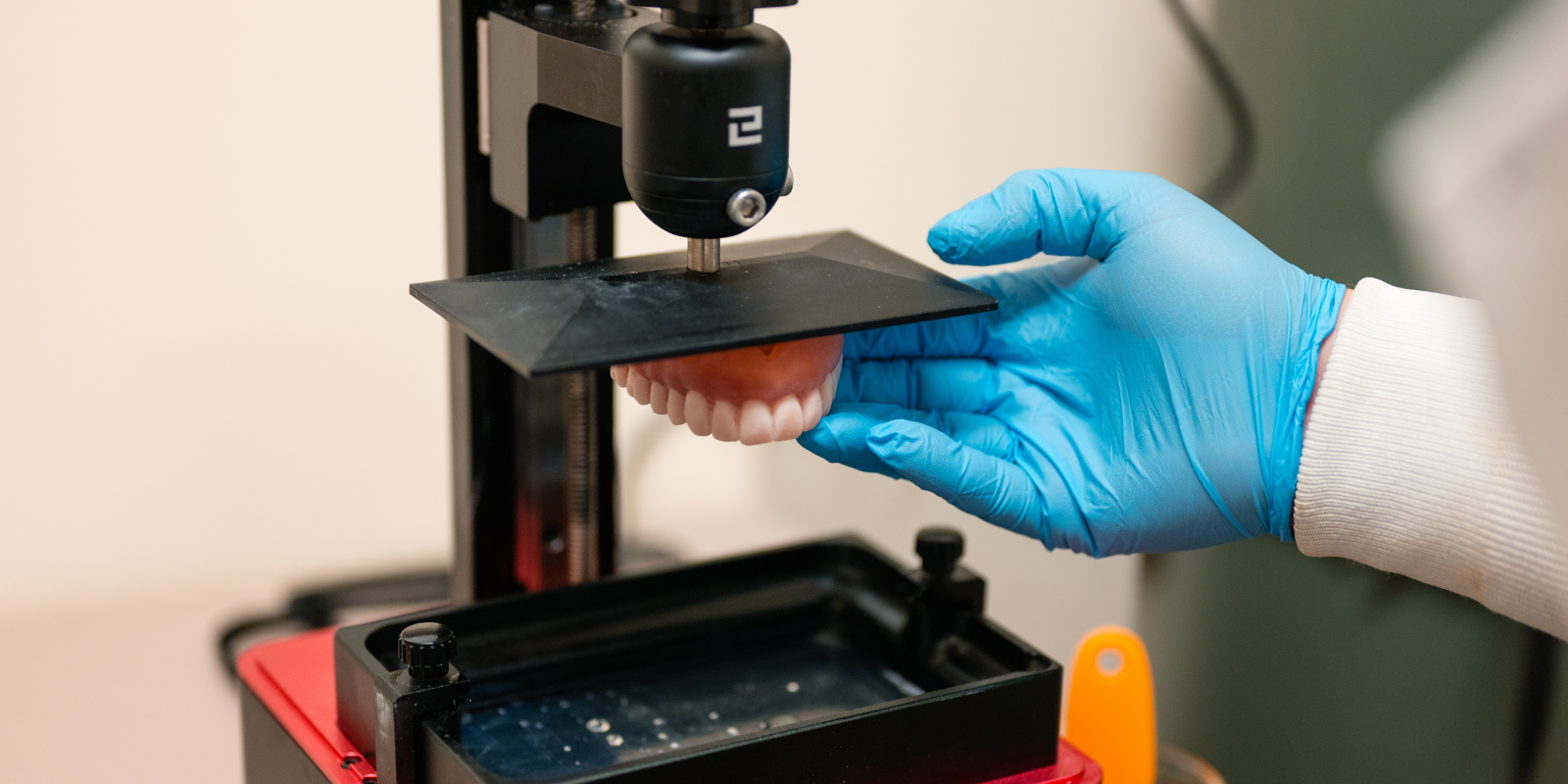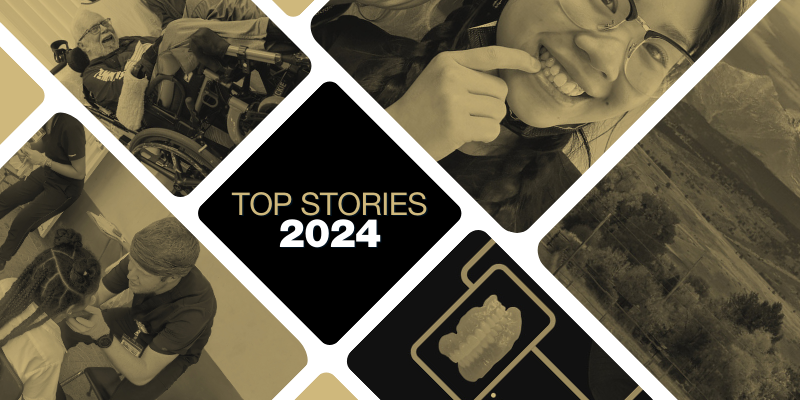From radioprotection in head and neck cancer therapy to trends in patient-centered communication training, the 39th Annual CU Dental Research Day on Feb. 23 brought together a variety of compelling research topics.
“The posters and presentations at Research Day this year exemplify the strength of our research program as well as the impact these projects will have on the future of oral healthcare,” said Associate Dean of Academic Affairs and Innovation and Research Day Co-Chair Tracy de Peralta, DMD, PhD, MClinEd.
Protecting Healthy Cells in Cancer Therapy
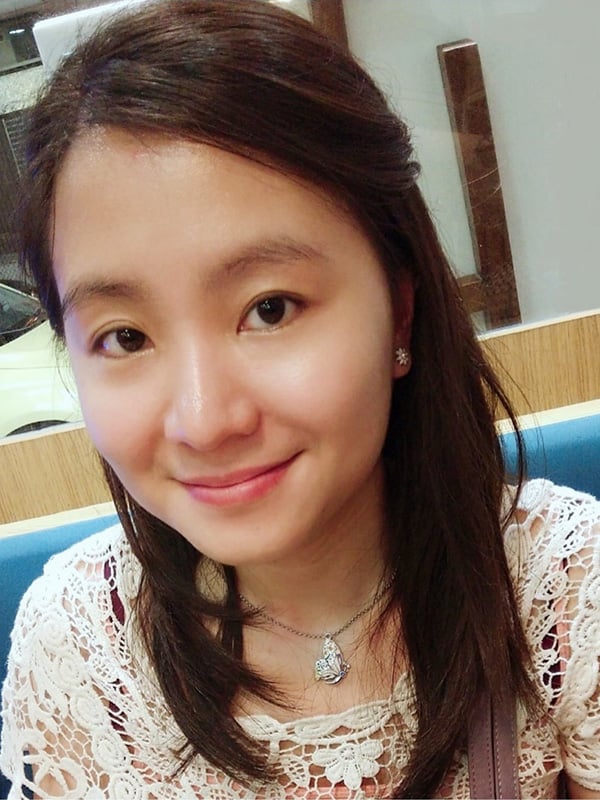
Trisiani Affandi, PhD |
Research Associate Trisiani Affandi, PhD, presented, “Advances in Radioprotection of the Salivary Gland.” Patients treated with radiation for head and neck cancer (HNC) often sustain collateral damage to non-cancerous tissues in the oral cavity, such as in the salivary glands. Affandi’s findings may help identify new targets for radioprotection of oral tissues in HNC patients, to keep the salivary gland function intact while still attacking the cancerous cells.
Affandi said, “There are currently very few strategies to protect the surrounding healthy tissues from radiation damage in HNC cancer patients. Our lab has found that Protein Kinase C delta regulates radiation-induced cell death in healthy cells and tissues. We hope that by understanding its function in cell death that we can help develop better strategies to prevent radiation damage to non-tumor tissues.”
Radiation is a very common cancer therapy. Affandi said, “These findings could be important for many types of cancers that are treated with radiation, and possibly chemotherapy. Our studies may also have a significant impact on patient therapy and quality of life, which is very gratifying to me.”
Patient care is at the heart of countless research endeavors. As we gain a more intricate understanding of these subjects, we can continue to improve patient care, treatment and outcomes in many different areas.
Advanced 3D Imaging Techniques in Craniofacial Development Research
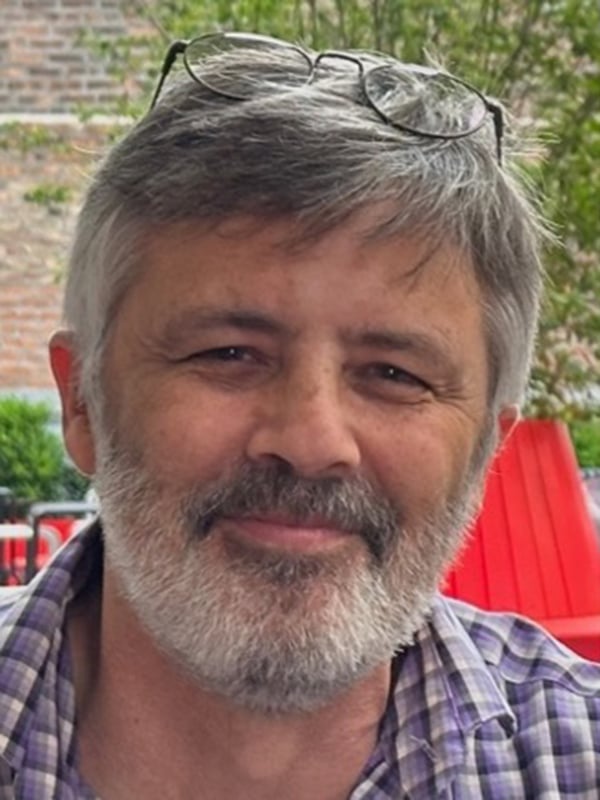
Timothy Cox, PhD |
Continued research into the understanding of genetic, behavioral and environmental factors in craniofacial development is “paramount to obtaining new knowledge of common craniofacial conditions,” said Keynote Speaker Timothy Cox, PhD, Endowed Professor in Dental and Musculoskeletal Tissue Research at the University of Missouri Kansas City School of Dentistry.
By understanding these factors better, we can learn more about conditions like cleft lip (an opening or split in the upper lip that occurs while a fetus develops), midface hypoplasia (underdevelopment of the upper jaw, cheekbones and eye sockets which can lead to an underbite appearance) and craniofacial microsomia (smaller features on one side of the face, typically affecting the ear and jaw).
Cox’s lab has become recognized as a leader in this field, using qualitative and quantitative high-resolution 3D imaging to assess the impact of genetic mutations and maternal diet on early craniofacial development.
CU SDM Associate Professor and Research Day Co-Chair Jamie Nichols, PhD, said, “The analysis and imaging techniques Dr. Cox has developed present countless opportunities for the future of oral healthcare. It's something that everyone in attendance will find compelling.”
Educational Research on Patient-Centered Teaching
A new area of research highlighted in this year’s program was educational research, which took center stage with an oral presentation on “Patient-centered teaching: How have we done in the past seven years?”

Tanya Russell, PhD |
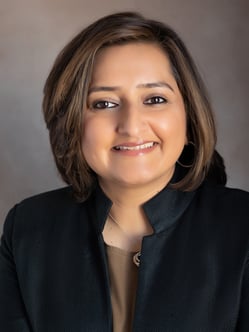
Tamanna Tiwari, BDS, MDS, MPH |
Co-presenters CU SDM Associate Professor and Associate Director for the Center for Oral Disease Prevention & Population Health Research (COPPR) Tamanna Tiwari, BDS, MDS, MPH, and Center for Advancing Professional Excellence (CAPE) Curriculum Manager Tanya Russell, PhD, will discuss the value that CAPE brings to dental education and trends in communication training for dental students.
CAPE promotes interprofessional education for current and future healthcare providers through simulation exercises and hands-on learning in a range of situations. CU Dental students have been working with CAPE since 2013.
In Tiwari’s Behavioral Health Sciences course, third-year dental students take on two standardized patient cases with CAPE. For example, one case presents a pregnant patient who immigrated to the United States and does not want X-rays. Students must establish a rapport, remember their training in oral-systemic connections and provide comprehensive, patient-centered care in a simulated environment.
At the end of each case, students complete a self-assessment and are evaluated by the patients from their assigned cases. They also do a self-reflection and feedback session with the patients, which allows for continuous improvement in their use of communication skills. Using assessments from the last seven years, Tiwari will present cumulative data to show students’ growth in eight skills categories. Furthermore, the data will be used to work with faculty on integrating what they feel is necessary into their curriculum.
Additional oral presentations include “Buffering Craniofacial Development” by PhD Candidate Abigail Mumme-Monheit and “RNA Polymerase III in craniofacial cartilage and bone development” by Assistant Professor Kristin Watt, PhD.
Posters Compete for $600 in Prizes
In addition to oral presentations, Research Day featured a poster competition. Everyone with a research project at the CU SDM is encouraged to participate in the poster session.
Although faculty members are ineligible for an award, Assistant Professor Yanira Owens, RDH, MHA, EdD, will bring another educational research topic to the day with her poster, “Examining Burnout between Traditional and International Dental Students Training in the U.S.”
Posters are judged in four categories:
|
1. DDS and ISP students at the School of Dental Medicine |
|
Assessing Streptococcus mutans Susceptibility to Azobenzene Polymers |
|
A Novel Urethane Monomer to Achieve High-Performance Photopolymers |
|
Investigation of Acidic Comonomers to Achieve High Performance with Urethane Monomers |
|
Investigating the role of gata3+ neural crest cells in craniofacial development |
|
Theobromine slows enamel erosion and lesion progression |
|
Fluoride Enhanced Orthodontic Elastics: Evaluating Prevention of Demineralixzation and Erosion |
|
The Human Papillomavirus, Head & Neck Cancer, and the Latest Vaccine Considerations for Oral Health Professionals |
|
Tooth Loss in an Aging Population as it Relates to Systemic Health |
|
Evaluation Report: School-Based Health Center- Oral Health Programs |
|
A Novel Resin Based Endodontic Filling Material |
|
A comparison of the efficacy of different root canal irrigants in removing intracanal calcium hydroxide dressing—a scanning electron microscopic cleanliness evaluation. |
|
The PocketPerio application significantly increases the accuracy of diagnosing peridontal conditions. |
|
A novel method for grading pre-clinical restorations using a digital workflow |
|
2. Graduate students in labs at the School of Dental Medicine |
|
PDGFRa signaling regulates Srsf3 transcript binding to affect PI3K signaling and endosomal trafficking |
|
Alternative RNA splicing of transcripts encoding protein serine/threonine kinases downstream of PDGFR signaling in the facial mesenchyme |
|
3. Post docs and residents in labs at the School of Dental Medicine |
|
Alx Function in the Frontonasal Skeleton Revives the Pharyngeal Arch-0 Hypothesis |
|
Polymer Coatings to Combat Microbial Growth on 3D Printed Denture-Base Materials |
|
Characterization of calcium signaling in cranial neural crest cells during lower jaw development |
|
PDGFRa/β heterodimer activation negatively affects downstream ERK1/2 signaling and cellular proliferation |
|
Fins come and fins go: The smoothback zebrafish mutant informs median appendage development. |
|
Differences in funding approval for standardized Medicaid orthodontic treatment cases submitted to different Medicaid jurisdictions: a controlled prospective survey |
|
4. Laboratory staff professionals at the School of Dental Medicine |
|
Tuning Inkjet Photopolymer Formulations for Enhanced Properties |
|
A Role for prrx1 Genes in Median Fin Development |
The winning posters in each category will win $150; to be announced at the conclusion of the Research Day program.
